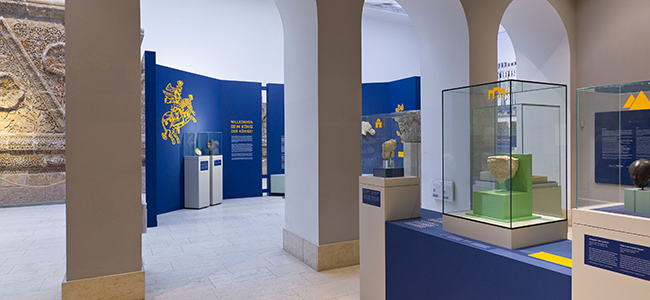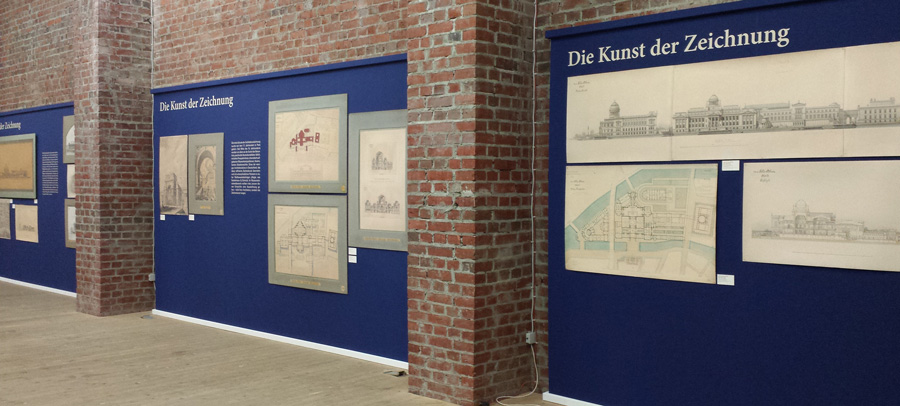Archaeologists uncover ruins, single out individual phases and create new conceptions of ancient spaces through restoration, description and reconstruction. In descriptions and travelogues, authors have devised and recorded conceptions of ancient spaces that, although possibly based on ancient sources, nevertheless introduce new ways of looking at ancient ruins.
| 23 | Researchers |
| 5 | Research Projects |
| 2 | Dissertation Projects |
| 23 | Publications |
| 5 | Events |
| 5 | Cooperating partners |
Archaeologists uncover ruins, single out individual phases and create new conceptions of ancient spaces through restoration, description and reconstruction. In descriptions and travelogues, authors have devised and recorded conceptions of ancient spaces that, although possibly based on ancient sources, nevertheless introduce new ways of looking at ancient ruins. But ruins and representations of ancient architecture are also created in museums, from small models to large-scale replicas, and are even broadcast as digitally animated sequences. All of these aspects of the formation and transformation – or rather the perception and representation –of ancient spaces have this in common: they generate a certain kind of knowledge about ancient spaces, and transfer it via media to specific contexts. These media transformations, however, condition our perception of and our dealings with ancient spaces. In this way, conceptions of ancient spaces are sometimes irreversibly formed at excavation sites and in museums, conceptions which should be researched from a historical perspective, but which should also serve as a point of departure for the interdisciplinary development of future concepts. For this reason, museum spaces as well as excavation sites viewed from a historical perspective are the central focus of the projects. Thus, the research group raised a fundamental question regarding knowledge transfer: the question whether new perspectives and forms should be developed from a historical perspective. The relation between actor and recipient – be she a museum visitor, a tourist or an inhabitant residing in the vicinity of a ruin – also played a central role here. In order to grasp, in particular, the effects and consequences of the formation of space and to understand the concomitant expectations, it was necessary to critically evaluate the impact of transformed and recreated ancient spaces. This evaluation were conducted following the approaches developed by “Archaeotopia” in Topoi I and in specific museum projects. Research goals were:
- Development of an integrative approach for fundamental research on materials, conservation, visualization, implementation of an exhibition concept and a parallel evaluation, culminating in a concrete museum presentation.
- Moreover, the group pursued the common goal, following concrete, individual examples, of jointly composing a monograph/reader which describes challenges and solutions in the sense of best practice examples from a historical perspective.
- A third goal and a particular challenge was to examine the transformation of antiquity in light of the research conducted by the other research areas, who supported the group in performing this task.
- The group had set as its fourth goal the forming of an inter-institutional and interdisciplinary junior research group from among the requested posts and scholarships.
The research group drew on the work done by research groups CSG-IV and CSG-V during the first funding period and continued this research from a broader perspective.
Research Projects
- (C-3-1-a) Modelling and vizualisation of findings and reconstruction hypotheses
- (C-3-1) Ktesiphon. Vermittlung von archäologischer Forschung im Museum anhand der Architekturtraditionen in sasanidischer und islamischer Zeit
- (C-3-3) Ruins – Museum visions
- (C-3-4) Ruins and space. A brief history of dealings with archaelogical excavation sites
- (C-3-5) Archaeotopia
Dissertations
- (C-3-0-3) Glazed Islamic Pottery from Tacht-e Soleiman – Production and Provenance
- (C-3-1-1) Museum in transformation. A case study at the Museum of Islamic Art, Berlin
- (C-3-1-2) From the raw material to cultural heritage - conservation studies on the Sasanian and early Islamic stucco decoration from Ctesiphon


